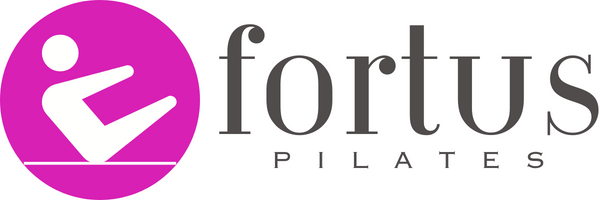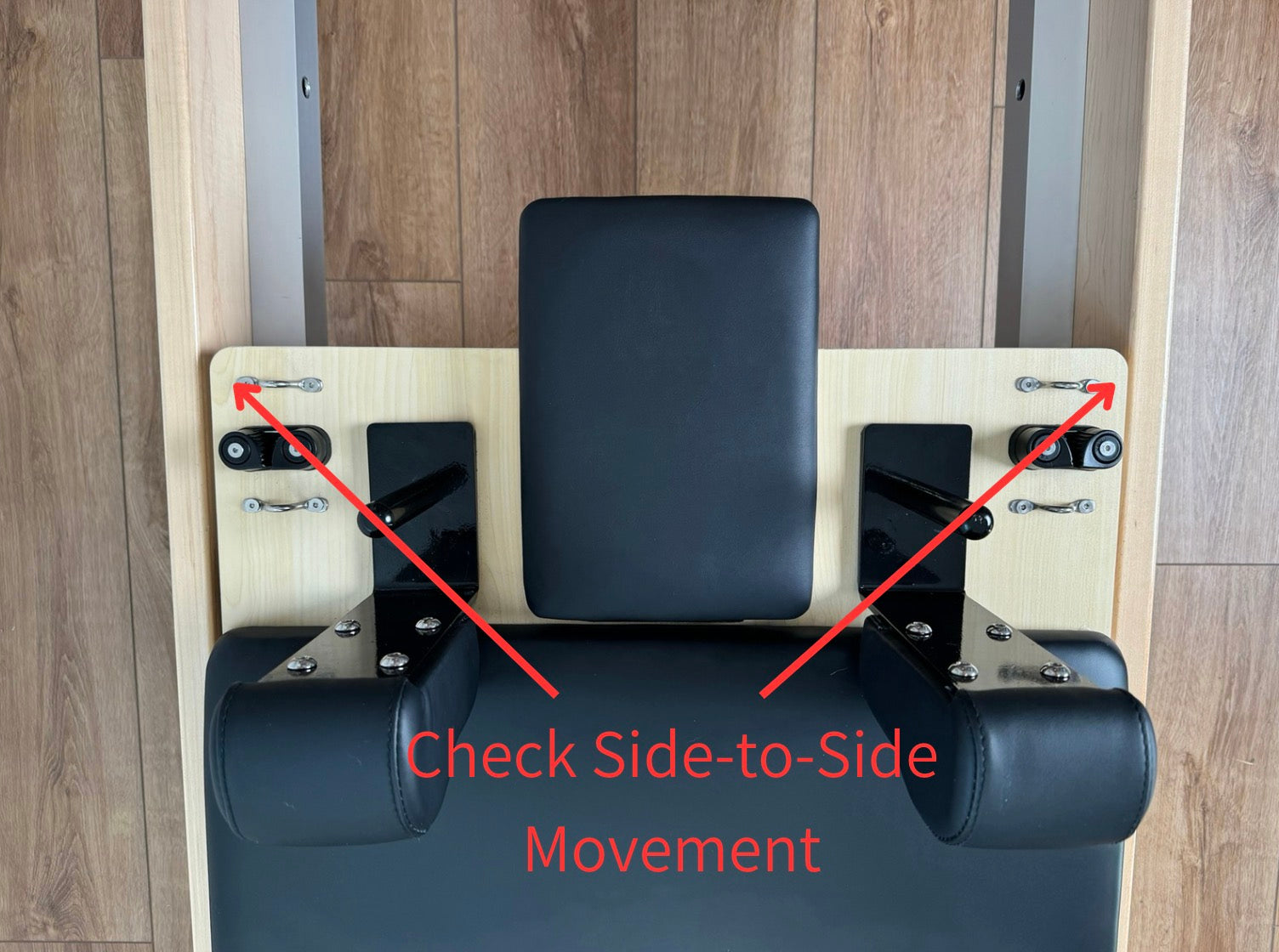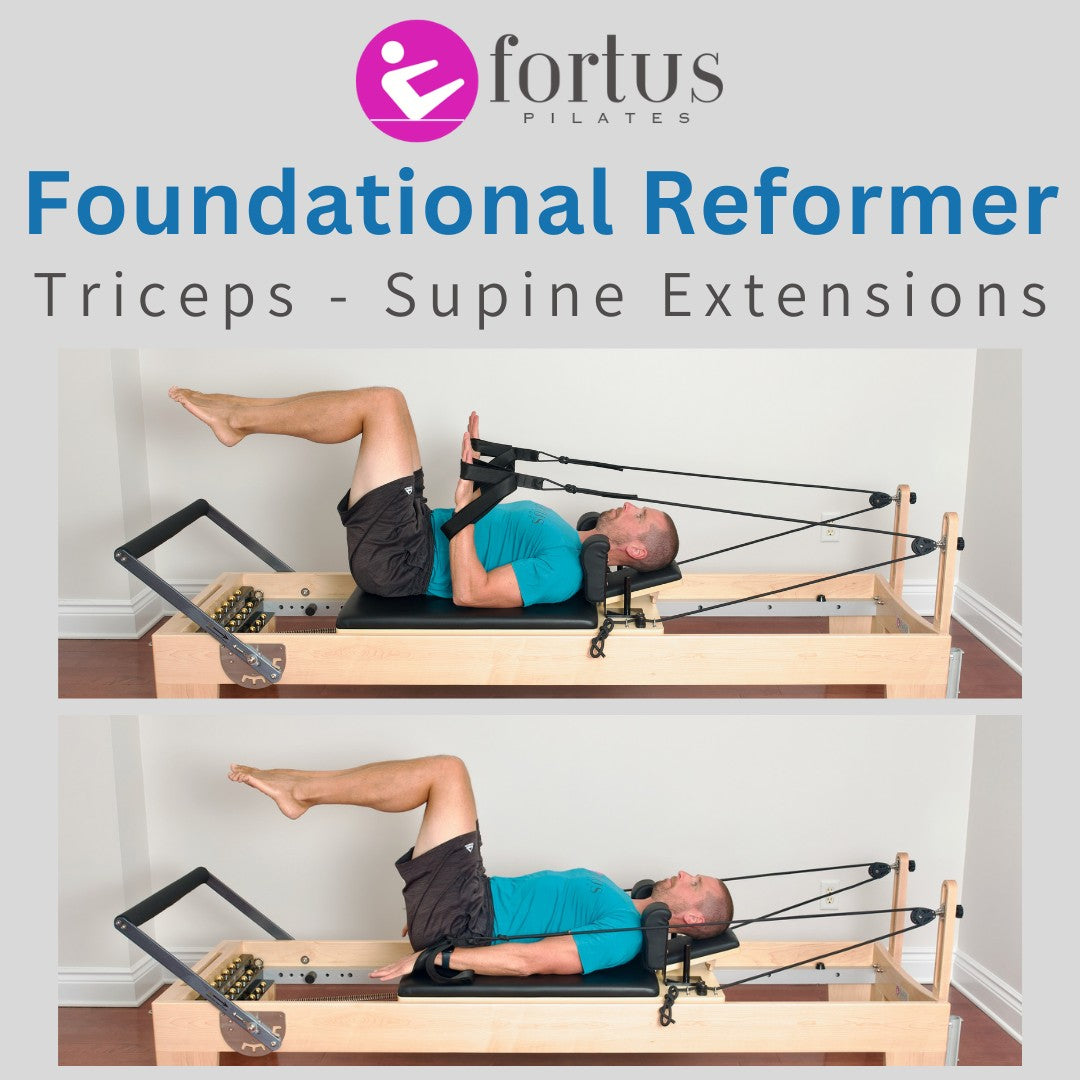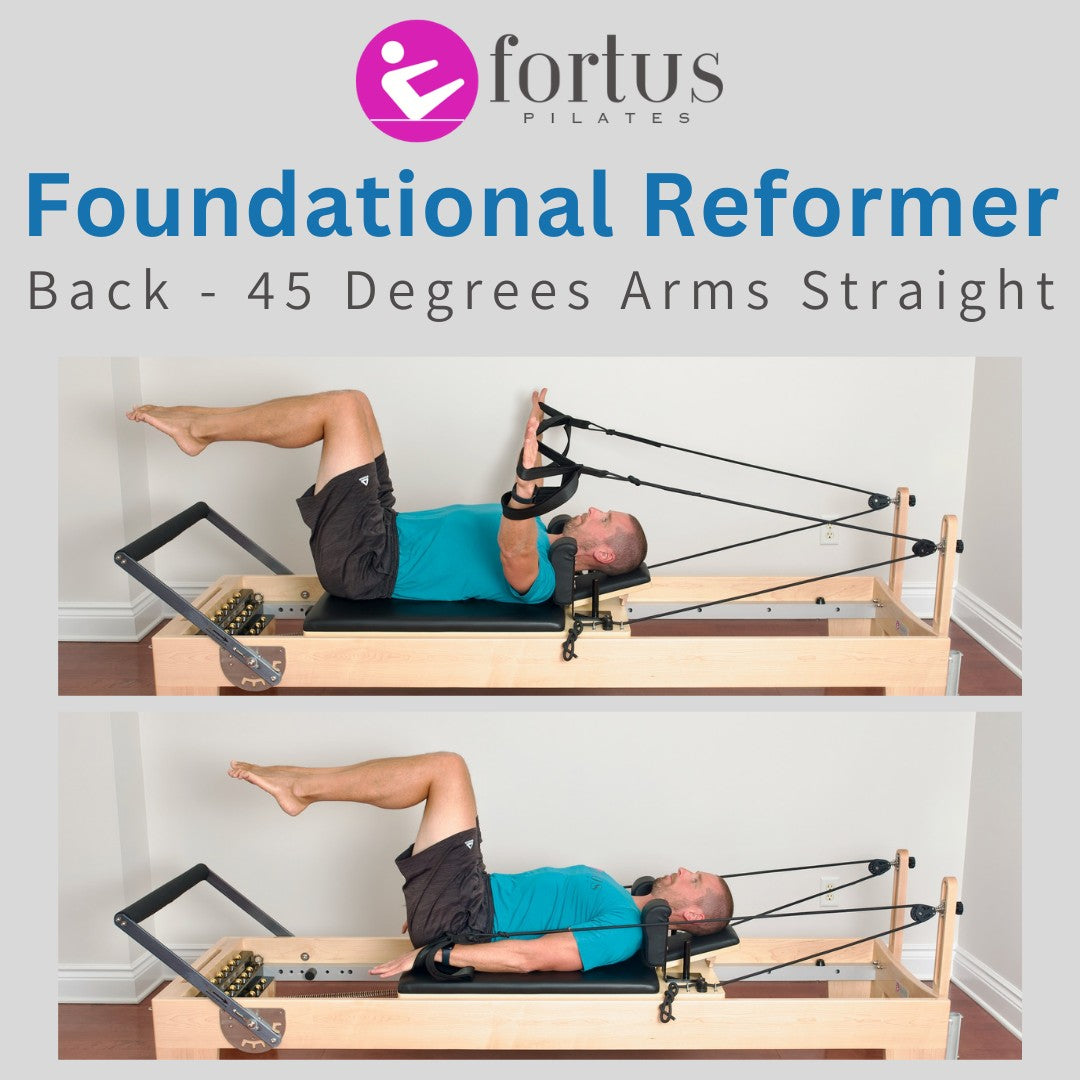
Summary
The Pilates Reformer Single Leg, One Leg Bent exercise involves maintaining a constant abdominal contraction while bending and extending a single leg supported by the footbar. The focus is on the entire abdominal area as well as the hip extensors and quadriceps. In addition, this exercise works several secondary muscles including the muscles around the knee cap and encourages and improves core and upper body stability during asymmetric load on the lower body.
Purpose
- Strengthen hip extensors and quadriceps.
- Improve core and upper body stability during movement of the lower body under asymmetric load.
Reformer Setup
- Footbar in elevated position.
- Spring tension moderate.
- Carriage stoppers adjusted to allow full bending of the knee to 90 degrees without hitting stoppers.
- Headrest positioned for comfort (can be up or down).
Starting Position
- Supine on the carriage, tailbone centered.
- Ball of one foot on footbar, plantar flexed (pointing). Other leg is bent in tabletop position with foot also in plantar flexion (pointed)

Starting position.
Execution (8-12 Repetitions Per Side)
- On inhale, push carriage out by extending the supported leg until the leg is straight. Maintain unsupported leg immobile in tabletop with ankle in plantar flexion (pointed). Maintain supported ankle in constant plantar flexion as well.
- On exhale, bend the knee of the supporting leg to return to the starting position. Maintain both ankles fixed in plantar flexion (pointed), with unsupported leg immobile in table top.
- Repeat the above movements for 8-12 repetitions, then repeat entire sequence for other leg.

Position 1. Bent position.

Position 2. Extended position. 8-12 repetitions between positions 1 and 2.

Position 3. Return.
Common Mistakes
- Core and upper body movement during exercise. The core and upper body should remain completely immobile and stable during the leg movement.
- Tension in upper shoulders and neck. The shoulders and neck should be relaxed, with the scapula retracted and stable.
- Lateral movement of the pelvis (side-to-side) during leg movement. The pelvis should remain immobile and level throughout.
- Unsupported leg in tabletop drops during movement. Keep unsupported leg immobile and fixed in table top.
- Knee of supported leg does not track perfectly vertical, but instead the knee splays slightly to the side due to an external rotation. Maintain consistent alignment of hip to knee to ankle to ensure knee tracks perfectly straight and vertical.
- Incorrect foot placement or plantar flexion of the supporting ankle results in weight not being supported by the ball of the foot. Keep weight into the ball of the supporting foot throughout the entire movement.
Modifications & Variations
- Perform exercise with supporting ankle in dorsiflexion (ankle flexed instead of pointed). Useful if you are unable to maintain the ankle in plantar flexion under load.
- Perform with supporting leg in a slight external rotation. Maintain the external rotation consistent throughout the entire movement.
- Perform with supporting leg in a slight internal rotation. Maintain the external rotation consistent throughout the entire movement.




